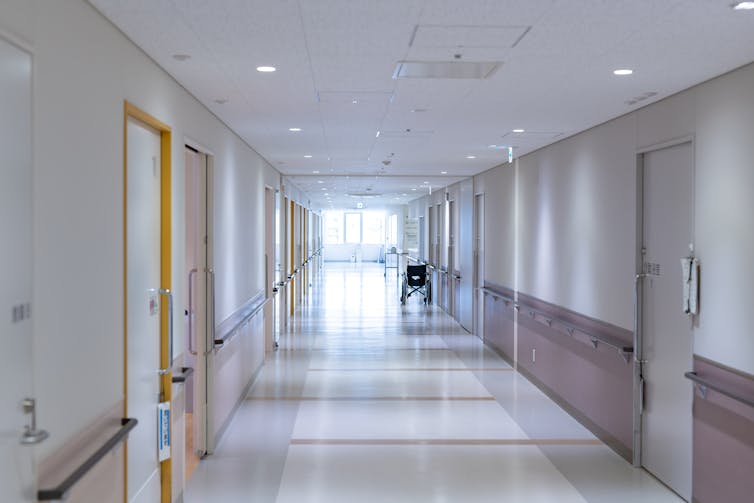In his budget reply speech this week, opposition leader Anthony Albanese promised a plan to fix the “crisis in aged care”.
Labor’s aged care package includes 24/7 registered nurses for all residential care facilities, better pay for aged care workers, more care, better food for residents, and greater accountability for providers.
The immediate cost of Labor’s commitments is estimated at A$2.5 billion over four years, not including better pay for workers.
That cost is likely to be up to A$4 billion per year, depending on the Fair Work Commission’s decision later this year. The commission is considering aged care worker unions’ case for a 25% pay increase.
But while Labor’s announcements are worthy initiatives, they stop short of the comprehensive plan we need for reform.
What’s the problem?
The Commonwealth took responsibility for aged care from the states 25 years ago.
It then centralised, privatised, commodified and marketised it to drive efficiency and manage its spending, but at the cost of quality and accountability.
The results are there for all to see. Increasingly, larger “big box” institutions are riddled with loneliness, poor quality care and isolation from friends, family and the community.
Those who don’t want to go into residential aged care, face year-long waiting lists for home and community care.
The Royal Commission into Aged Care Quality and Safety comprehensively documented the problems with the current system.
Labor’s aged care announcements
Labor’s initiatives in the budget reply are best seen as a downpayment focused on the problems in residential aged care identified by the commission.
The broader structural directions for policy are yet to be addressed. This includes:
- the balance between residential and home care, as Australians increasingly choose the latter
- market management and stewardship, as too much emphasis falls on cost and profit for providers and not enough on quality and outcomes for residents
- the balance between public and private financing, because better care will cost more.

But Labor’s initiatives for residential care are cleverly targeted.
Staff make up about 70% of residential aged care costs. One way of reducing costs and improving profits is to employ low paid unskilled workers on casual and flexible part time arrangements.
Not surprisingly, this has made aged care unattractive for workers. Quality has suffered and it is increasingly hard to get staff.
Another way to cut costs is to reduce living expenses for aged care residents. On average, one-third of homes still spend under $10 on food for each resident per day.
Read more: Why is nursing home food so bad? Some spend just $6.08 per person a day – that's lower than prison
There is little doubt aged care will struggle without a better paid and more skilled workforce, including a greater role for nurses.
In 2015, it was estimated each resident in aged care got about 168 minutes of care a day.
Labor is promising Fair Work wage increases for staff, 215 minutes of care for each resident and round-the-clock nursing support.
What’s in the budget for aged care?
The government promised little new for aged care in its 2022 budget, apart from a continuation of its response to the recent royal commission’s recommendations.
However there is a one-off bonus of A$800 and additional funding for training and to embed pharmacists in aged care facilities.
Read more: Health budget 2022 spends a little on favoured interest groups but misses a chance for real reform
While COTA (Council of the Ageing), which represents older Australians, largely endorsed the government’s budget and its response to the royal commission, the Australian Aged Care Collaboration, representing major providers, has been much more critical, particularly of the government’s lack of commitment to lift the pay for aged care workers.
In contrast, both consumer and provider organisations have been supportive of Labor’s budget initiatives for aged care.
In general, the aged care sector has criticised the government’s response to the aged care crisis as anaemic: too little, too slow and too late (particularly in relation to COVID).
Throughout the pandemic, there have been repeated calls for the Aged Care Minister, Richard Colbeck to be sacked.

None of this was helped by the royal commission’s inability to present a coherent, unified and consistent blueprint.
Not surprisingly, the government cherry-picked an incremental, piecemeal path of least resistance from the commission’s recommendations to shore up, rather than reform, the current system.
A key line in opposition leader’s budget reply speech for aged care was: “we will bring the principle of universal, affordable and quality service to Child Care and to Aged Care”.
Aged care reform remains unfinished business for Labor. It made a start this week but more needs to come.
Read more: When aged care workers earn $22 an hour, a one-off bonus won’t help

